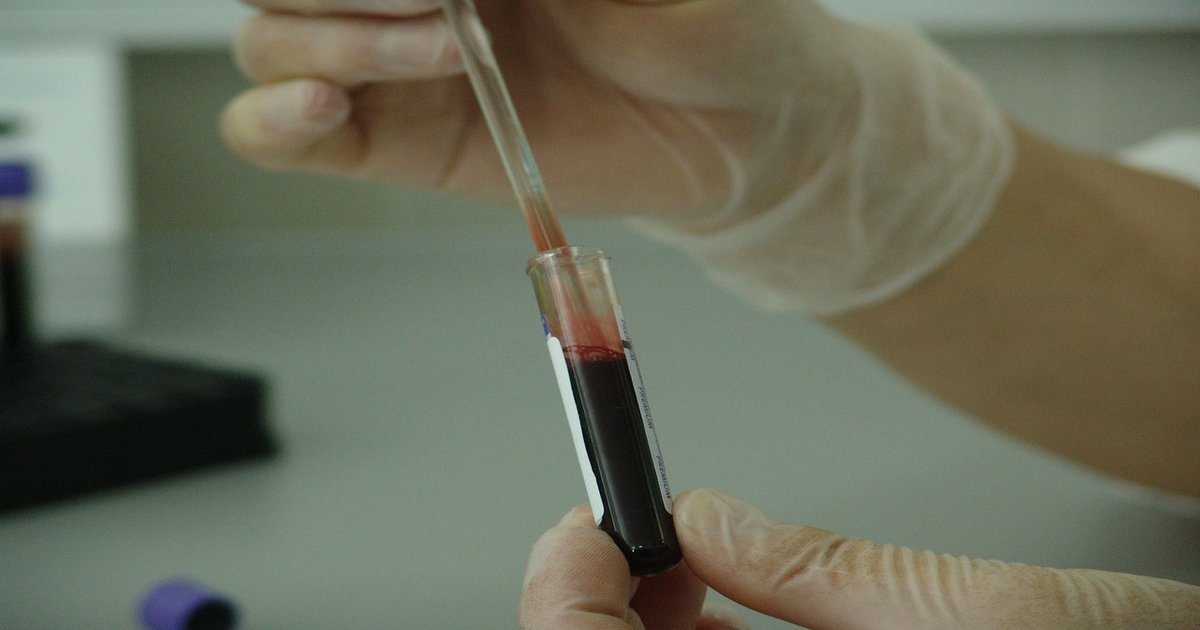Month: February 2016

Cheer Up A Mesothelioma Patient With Some Fun Decorations
The winter blues. The long, cold, winter months can seem to last forever! For someone who may be extra sensitive to the cold or unable to leave their home, like many mesothelioma patients, it can be even more vexing.
With Valentine’s Day this week, it may be a nice idea to take a card, candy, or some small gift to your loved one. On St. Patrick’s Day, wear your favorite green and greet them with a shamrock! These are small things that could brighten up their days.
If the person happens to be in the hospital, check and see if you could decorate their room. Hanging a few simple decorations could be just the thing to lift their spirits. The same thing goes for their home… a little bit goes a long way.
Besides the holidays, paying a visit to someone with mesothelioma, their caregivers, or ones who may have been left behind, can make all the difference. As I always say, let them lead the conversation – they may be up to talking about their condition, or might not want to bring it up at all! Knowing that people care is one of the best gifts you can receive when dealing with any kind of trying situation; the mesothelioma community is no different in this respect!
During this cold season, warm it up with some hot cocoa, good company, and love. Remember that even though it may be dreary outside, it doesn’t take much to make the inside inviting and full of life!
Know more about Mesothelioma and how you can deal with it.

Biomarker May Be Useful Prognostic Factor for Mesothelioma
Nearly 3,000 Americans a year hear the words, “You have mesothelioma.” While the available treatments can relieve symptoms, they do little to improve survival. Stage of the disease, lifestyle, gender and age all play into a patient’s survival. Now, researchers believe that the fibulin-3 biomarker may be another indicator for survival in mesothelioma patients.
Researchers from the Asbestos Diseases Research Institute of Australia, report that while fibulin-3, a protein that floats in blood plasma and in some bodily fluid, has previously been identified as a potential diagnostic marker for mesothelioma, it is also reliable as a prognostic marker. Such biomarkers as the fibulin-3 protein are being sought as a means to detect pleural mesothelioma at an earlier stage, to assist in prognosis, and to individualize treatment strategies for mesothelioma patients.
In a recent study, the researchers measured the amount of fibulin-3 in plasma and pleural effusion from malignant pleural mesothelioma patients and in tumor-bearing mice. They found that fibulin-3 was over-expressed in all mesothelioma lines and that there was a correlation between the expressed and secreted levels. They discovered that the fibulin-3 levels in “pleural effusion fluid were found to be independently associated with prognosis.”
In a 2012 study, using a simple blood test and a lung fluid test of pleural effusion, researchers from NYU Langone Medical Center, led by Dr. Harvey Pass, Director, NYU Division of Thoracic Surgery and Chief of Thoracic Oncology, at NYU Langone, found that the protein fibulin-3 is four to five times more elevated in individuals with mesothelioma than those without. By measuring the levels of fibulin-3 the researchers were able to distinguish healthy people with exposure to asbestos from patients with mesothelioma establishing the protein as a potential mesothelioma diagnostic marker.
According to the NYU Langone website, the team is continuing to study the usefulness of fibulin-3 as a diagnostic marker through “a large validation study using an asbestos exposed cohort of individuals in Santiago Chile.” The study, funded by the NCI, was scheduled to begin in the third quarter of 2015.
Pleural mesothelioma, a rare form of cancer affecting the lining of the lungs, is highly aggressive and there is no cure for the disease. Any research unique to mesothelioma brings hope to the community that finding a new, effective treatment is on the horizon.
The results of the ADRI study were published in the Sept. 2015 British Journal of Cancer.
Mesothelioma Treatment Goals May Change as the Disease Progresses
We are all goal-oriented in some way, although some more so than others. When patients are diagnosed with mesothelioma, their goals of care are discussed. No one wants the mesothelioma patient, or their family, to suffer with interventions that are not effective. The goals of therapy are individual and are, ideally, made jointly with the mesothelioma team. While goals established in a business environment usually have a timeline and benchmarks attached, for mesothelioma patients, it is not that clear cut.
When first diagnosed with mesothelioma, many people are determined to fight. They make it their mission to learn all about the disease: where to go for treatment, clinical trials, what can do they, what can their family do. Unfortunately, for many diagnosed with mesothelioma, disease progression can be rapid.
A patient I cared for this week had been diagnosed over two years ago. He and his supportive family have fought mesothelioma aggressively. Together they had been a force. Their goal was always to keep going, don’t give up. The patient had enjoyed some good times with his family and made some memories, but time and disease progression had taken its toll. He had lost weight, did not feel well, was in pain, had no appetite and was continually nauseous. He had also changed, he was accepting and quiet. His family was not. They continued to use their resources and energy to encourage the patient to keep fighting aggressively.
As the patient’s disease had progressed, the options for his therapy became limited. At this point it, it was time to take all that energy and redirect the goals of his care. Just as the family and patient had been a force of nature fighting the disease, it was now time to become a force to fight the pain and the nausea, and to make him comfortable.
People with mesothelioma all have a unique story to tell. Unfortunately, there is not a cure at this point in time. Goals should be set with the mesothelioma team, and as the individual’s disease progresses, the goals should be re-established, as needed.
My patient and his family did re-direct their goals. Now, he is comfortable, home, and they have had conversations that they never had while fighting the disease. Conversations that will become memories as time goes on.

Imaging Tool May Guide Surgeons to Successful Removal of Mesothelioma Cells
Duke University and Massachusetts General Hospital oncologists are helping to bring a breakthrough cancer-fighting tool to surgeons. The two centers have partnered with Lumicell, Inc., in clinical trials to test the safety of an investigative tool that could help surgeons achieve total cancer resection in one attempt. For mesothelioma patients who have a very high chance of recurrence, this tool could be a life saver.
Developed by Lumicell, Inc., LUM015 combines a hand-held imaging device with an injectable agent that glows, or fluoresces, when cancer cells are detected. This gives surgeons instant feedback and guides them to remove all traces of the cancerous tumor.
According to Lumicell, the company “is addressing the number one challenge in cancer surgery – the need to remove all cancer cells within the tumor bed during the first surgery,” with its LUM015 technology.
“The unprecedented ability to see and remove all cancer cells during the initial surgery has the potential to significantly improve surgical outcomes and reduce healthcare costs by eliminating the need for repeat surgeries,” reports Lumicell.
Mesothelioma, an unusual form of cancer caused by exposure to airborne asbestos fibers, often has a complex growth pattern making complete surgical removal a very difficult task. Surgeons often have to guess how much tissue to remove, then send samples to the lab for confirmation that they got it all. If cancer cells are found in the margin of the tumor, that often means recurrence is inevitable and another surgery may be required.
LUM015 is unique in that it offers real-time visuals to the surgeons to ensure clean tissue margins, indicating all cancerous cells have been removed. This helps eliminate repeat surgeries to remove any missed cancer cells and, as a result, it can halt cancer recurrence and metastasis.
“In the operating room our goal is to take out 100 percent of a patient’s tumor, and the way we try to do that is to take out a margin of normal tissue around the tumor,” said Brian Brigman, M.D., Ph.D., chief of orthopedic oncology at Duke, in a Feb. 2 interview with ABC11 News in Raleigh, NC. “There are parts of the tumor that are microscopic that we couldn’t see even if we wanted to. What the probe does is allow us to see microscopic disease that was maybe left behind.”
Although Dr. Brigman is enthusiastic about the potential use for the tool, saying, “This is groundbreaking research in the way we treat sarcomas,” he admits it could still be 10 years before the tool is used on a regular basis with patients.
To the nearly 3,000 Americans who are diagnosed with mesothelioma each year, and who typically face a grim prognosis, this tool could extend their survival and improve their quality of life.
LUM015 is currently being tested on breast cancer patients. For more information on the clinical trial see ClinicalTrials.gov.
Know more about Mesothelioma and how you can deal with it.

“Disclaimers” Can Help Mesothelioma Patients Make Informed Decisions
On TV these days there are plenty of advertisements for medications. It is hard not to notice the long disclaimers at the end. Do not take if a, b, c, d! Notify your doctor immediately if you develop x, y or z. Who would take any of those medicines after they hear all that? When put in perspective, it is a very small percentage of people on these medications who develop the side effects. But the companies are required by law to inform patients with the disclaimers so they can make an informed decision.
Recently, while taking care of a mesothelioma patient after surgery, we talked about the balance of information. How much do you want to know versus how much you are told. What was the right amount of information for this patient?
Full disclosure is important so that people can weigh their options. Knowing from the outset that if you choose to have surgery, it will involve pain, it will be difficult, unpleasant and exhausting. You may or may not have a breathing tube in your mouth, a tube in your nose, tubes in the sides of your chest, and even a tube in your bladder. That it will be in your best interest to do things that you do not want to do, like walking. You will be restricted in your fluid intake. These are the basic facts. Not all of them, but important ones, about your surgical experience.
Should there be a lengthy disclaimer listing all the possible things that could go wrong? Would you feel better knowing all the possibilities ahead of time?
In my experience, most people want to know what is going on with them and their loved ones. They trust that there will be open communication and that everyone will do their best. It would be impossible to list all the possible scenarios that might happen before, during and after surgery. Everyone’s experience is unique.
Anyone with a question today about just about anything turns to Google to find the answer. During your mesothelioma journey, the information you find may or may not be pertinent to you. Sometimes the information can be confusing and complicated and not in the right context for your particular situation. If this happens to you or your loved one, ask your mesothelioma team. The journey with mesothelioma is a team effort, and hopefully, with open communication you will find the right balance of information, to make informed decisions.
My patient had found her balance, she and family members could concentrate on recovery, knowing that for her and her family, she had enough pertinent medical information, in the right context, to make her decisions.
Know more about Mesothelioma and how you can deal with it.

Free Mesothelioma Patient & Treatment Guide
We’d like to offer you our in-depth guide, “A Patient’s Guide to Mesothelioma,” absolutely free of charge.
It contains a wealth of information and resources to help you better understand the condition, choose (and afford) appropriate treatment, and exercise your legal right to compensation.
Download Now